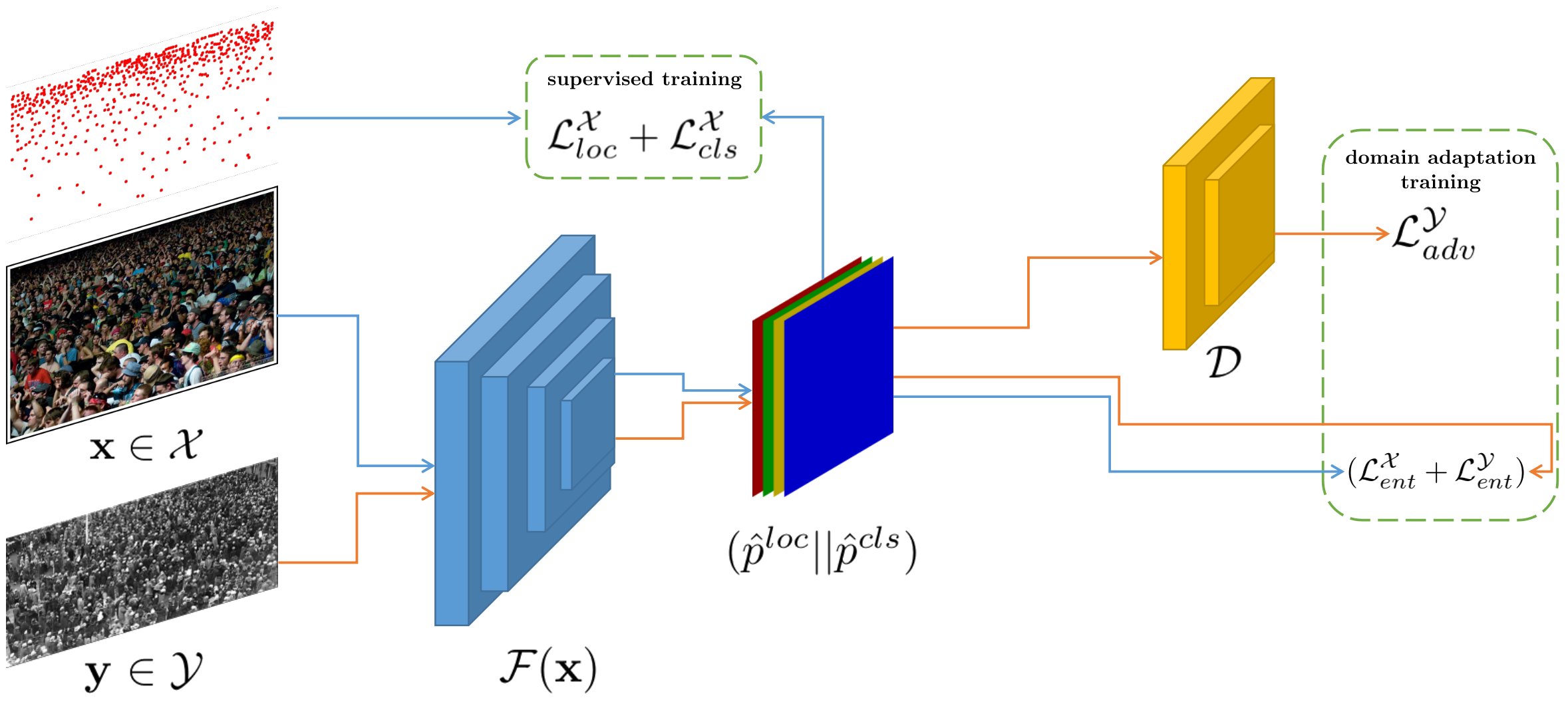Abstract
Self-training crowd counting has not been attentively
explored though it is one of the important challenges in computer vision. In
practice, the fully supervised methods usually require an intensive resource
of manual annotation. In order to address this challenge, this work
introduces a new approach to utilize existing datasets with ground truth to
produce more robust predictions on unlabeled datasets, named domain
adaptation, in crowd counting. While the network is trained with labeled
data, samples without labels from the target domain are also added to the
training process. In this process, the entropy map is computed and minimized
in addition to the adversarial training process designed in parallel.
Experiments on Shanghaitech, UCF_CC_50, and UCF-QNRF datasets prove a more generalized improvement of our method over the other state-of-the-arts in the cross-domain setting.
Experiments on Shanghaitech, UCF_CC_50, and UCF-QNRF datasets prove a more generalized improvement of our method over the other state-of-the-arts in the cross-domain setting.
Overall framework

Given an image sample, the
deep network first extracts feature, then estimates location offset map and
classification map. With source domain sample, since label is available,
supervised L2 Distance loss and Cross Entropy loss can be effortlessly
calculated and they are used to guide the network. On the other hand, since
sample on target domain does not have label, adaptive domain loss functions
are emloyed to additionally teach the domain adaptation learning process.
Blue arrows indicate source sample's learning flow, while orange arrows
indicate the learning flow of target sample.
Result video
Publication
Self-supervised
domain adaptation in crowd counting
Pha Nguyen, Thanh-Dat Truong,
Miaoqing Huang, Yi Liang, Ngan Le, and Khoa Luu
2022 IEEE International
Conference on Image Processing (ICIP), 2022.
@inproceedings{nguyen2022selfsupervised,
author = {Nguyen, Pha and Truong, Thanh-Dat and Huang, Miaoqing and Liang, Yi and Le, Ngan and Luu, Khoa},
title = {Self-supervised Domain Adaptation in Crowd Counting},
booktitle = {2022 IEEE International Conference on Image Processing (ICIP)},
year = {2022}
}


